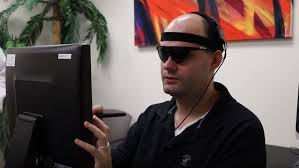
Breaking News
 Dead Men Tell No Tales: How Israel Eliminates Witnesses
Dead Men Tell No Tales: How Israel Eliminates Witnesses
 This Is Why Nice Neighborhoods Have No Blacks In It.
This Is Why Nice Neighborhoods Have No Blacks In It.
 Canada Locks Down the Woods. Fines Range from $25K – $150K for Hiking, Biking & Fishing
Canada Locks Down the Woods. Fines Range from $25K – $150K for Hiking, Biking & Fishing
 Trump Puts Washington DC Under Federal Control, Calls in 800 National Guard Troops
Trump Puts Washington DC Under Federal Control, Calls in 800 National Guard Troops
Top Tech News
 3D printing set to slash nuclear plant build times & costs
3D printing set to slash nuclear plant build times & costs
 You can design the wheels for NASA's next moon vehicle with the 'Rock and Roll Challenge
You can design the wheels for NASA's next moon vehicle with the 'Rock and Roll Challenge
 'Robot skin' beats human reflexes, transforms grip with fabric-powered touch
'Robot skin' beats human reflexes, transforms grip with fabric-powered touch
 World's first nuclear fusion plant being built in US to power Microsoft data centers
World's first nuclear fusion plant being built in US to power Microsoft data centers
 The mitochondria are more than just the "powerhouse of the cell" – they initiate immune...
The mitochondria are more than just the "powerhouse of the cell" – they initiate immune...
 Historic Aviation Engine Advance to Unlock Hypersonic Mach 10 Planes
Historic Aviation Engine Advance to Unlock Hypersonic Mach 10 Planes
 OpenAI CEO Sam Altman Pitches Eyeball-Scanning World ID to Bankers
OpenAI CEO Sam Altman Pitches Eyeball-Scanning World ID to Bankers
 New 3D-printed titanium alloy is stronger and cheaper than ever before
New 3D-printed titanium alloy is stronger and cheaper than ever before
 What is Unitree's new $6,000 humanoid robot good for?
What is Unitree's new $6,000 humanoid robot good for?
 "No CGI, No AI, Pure Engineering": Watch Raw Footage Of 'Star Wars'-Style Speeder
"No CGI, No AI, Pure Engineering": Watch Raw Footage Of 'Star Wars'-Style Speeder
Brain implant restores partial vision to blind people

Partial sight has been restored to six blind people via an implant that transmits video images directly to the brain.
Some vision was made possible – with the participants' eyes bypassed – by a video camera attached to glasses which sent footage to electrodes implanted in the visual cortex of the brain.
University College London lecturer and Optegra Eye Hospital surgeon Alex Shortt said it was a significant development by specialists from Baylor Medical College in Texas and the University of California Los Angeles.
"Previously all attempts to create a bionic eye focused on implanting into the eye itself. It required you to have a working eye, a working optic nerve," Shortt told the Daily Mail.
"By bypassing the eye completely you open the potential up to many, many more people.



